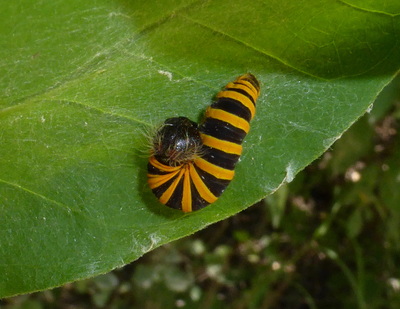As we hadn’t spent very long at Yateritas yesterday we decided to go back there again today and have a longer search for Antillean Blue Pseudochrysops bornoi. Before we set off our minibus had a slow puncture so the ever-capable Leandro put emergency filler in it. We arrived there at 10.15am and again it was already very hot. We couldn’t find what we were looking for which was a great shame and bearing in mind that this area must have taken the full force of Hurricane Matthew recently I do wonder whether it will ever be seen in Cuba again. I keep telling myself that insects can be remarkably resilient but I have to say I’m not hopeful. We did see some other nice things though. We caught up with several Obscure Skipper Panoquina panaquinoides which I had missed yesterday and there were quite a few Mangrove Buckeye Junonia neildi flying amongst the Black Mangrove Avicennia germinans. This was another new butterfly for us. Doug was telling me how the larvae feed on the small plants just 30cm high and he then promptly found two just to prove the point!
|
We stayed last night at the hotel Villa La Lupe. It is located on the banks of Bano River just outside Guantánamo City. It is described as was somewhat reminiscent of Fawlty Towers! Lots of endearing quirks but these were negated by the exceedingly noisy music from the swimming pool bar. And that wasn’t just when we arrived in the evening but also at 2.30 in the morning! When we spoke to the folk at reception today to ask to ensure that it didn’t happen again tonight they went through the motions but I got the distinct impression that as this was a hotel used largely by Cubans and that this is what Cubans like to do, not much would change. As we hadn’t spent very long at Yateritas yesterday we decided to go back there again today and have a longer search for Antillean Blue Pseudochrysops bornoi. Before we set off our minibus had a slow puncture so the ever-capable Leandro put emergency filler in it. We arrived there at 10.15am and again it was already very hot. We couldn’t find what we were looking for which was a great shame and bearing in mind that this area must have taken the full force of Hurricane Matthew recently I do wonder whether it will ever be seen in Cuba again. I keep telling myself that insects can be remarkably resilient but I have to say I’m not hopeful. We did see some other nice things though. We caught up with several Obscure Skipper Panoquina panaquinoides which I had missed yesterday and there were quite a few Mangrove Buckeye Junonia neildi flying amongst the Black Mangrove Avicennia germinans. This was another new butterfly for us. Doug was telling me how the larvae feed on the small plants just 30cm high and he then promptly found two just to prove the point! Tropical Buckeye Junonia zonalis is very common and widespread in many open habitats in Cuba. Mangrove Buckeye however is much more restricted to areas around the coast where the foodplant grows though wanderers do occasionally turn up inland. From looking at photos previously I had thought that these two species would be very difficult to tell apart. Nothing of the sort! After a while I realised that they were easily distinguishable in flight. J. zonalis always shows a large pale post-median patch on the upper forewing whereas on J. neildi the wings appear all reddish-brown in flight. I should have realised sooner since Doug had called it correctly from about 30m away in flight only, and long before I had even worked out it was a Junonia. After lunch we started slowly on our way back towards Guantanamo and made a couple of very productive stops by the road on the way and at each ventured along tracks into woodland to see what we could find. At the first was a very obliging Silver-studded Leafwing Hypna clytemnestra. I had seen one in flight near the start of the holiday but had never seen one settled before. If we got too close it would simply move a few trees away and settle again. Its a member of the Charaxinae (Leafwings) of which there are about 400 species worldwide and are one of my favourite groups. With this obliging individual we have now seen and photographed all five species that occur in Cuba. Here we also saw Gray Cracker Hamadryas februa, Iphicleola Sister Adelpha iphicleola, Lyside Sulphur Kricogonia lyside. These last two were the only ones that we saw on the whole trip, and only about 30m from the road. Our final stop not far away produced a new skipper for us Antillean Flasher Astraptes xagua - and what a stunner! Doug then also managed to find several larvae on the foodplant Senna atomaria as well as empty leaf shelters, a hatched egg and a parasitised pupa! Strangely all the larvae seemed to be on the rather mouldy-looking leaves rather than on the young fresh growth. Another brilliant day and then on back to Villa La Lupe on the edge of Guantánamo City for a second night.
0 Comments
Leave a Reply. |
Welcome to our Blog
Here we will post interesting news about what we and others have seen in Cuba. Archives
July 2024
Categories |














 RSS Feed
RSS Feed